One of our consistent priorities as a campaign is to make sure that local streets are opened up for easier cycling. Whilst strategic routes form part of the network, most journeys start and end away from these ‘big ticket’ investments. Controlling motor vehicle traffic on local streets has significant benefits for noise, air quality, road safety and active travel. We’re therefore pleased to see Gloucestershire County Council bring forward a 20mph scheme for Hatherley, and hope that it is the start of the widespread rollout of 20mph that Gloucestershire desperately needs.
We responded to the consultation that ran until 14th July 2023.
Cycling campaign response to the proposals
General comments
- We support the adoption of 20mph limits which are widely needed across the residential areas of Gloucestershire. There is growing evidence that, even when physical measures have not been adopted, the introduction of safer speed limits reduces road harm and facilitates more active travel. We therefore strongly support the overall aim of the scheme to introduce 20mph zones in this area.
- We do not, however, support the use of speed cushions of the type proposed throughout the scheme, as a means of reducing speed. The design creates a significant and uncomfortable vertical deviation for cycle users within the area, causing loss of momentum or incentivising cycle users to take an unsafe position either in the gutter or middle of the road to avoid them. We believe other measures (such as ‘give way to oncoming vehicle’ narrowing points with cycle bypasses on each side (as used on Albert Road) provide a more appropriate treatment in this area.
Plan specific comments
Drawing 1
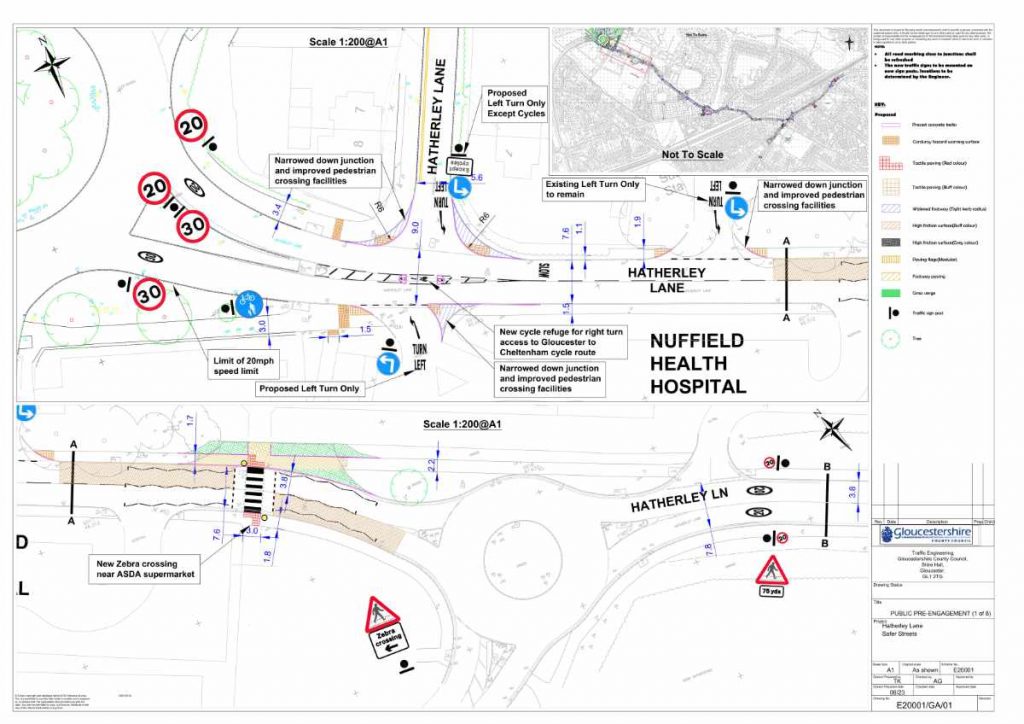
- The most significant omission of the proposals is failing to address the unsafe pedestrian and cycle crossing at the roundabout exit. As we advised in our response to WCTIS, the consequences of the enlarged approaches to the roundabout mean that exit speeds have increased, and sighting distances remains incredibly poor at this location for cycle users to cross, particularly from north to south. Whilst it is technically within the 20mph zone, vehicles will still be slowing, and additional street furniture will further restrict sighting. We would suggest additional measures are required here, such as adjusting the geometry of the roundabout exit, or a formalised crossing ideally with a raised table. With the downgrade of the cycle route through the amended proposals for the transport hub, this connection will remain an important link to the shared path facility around the edge of Hatherley, and needs better consideration.
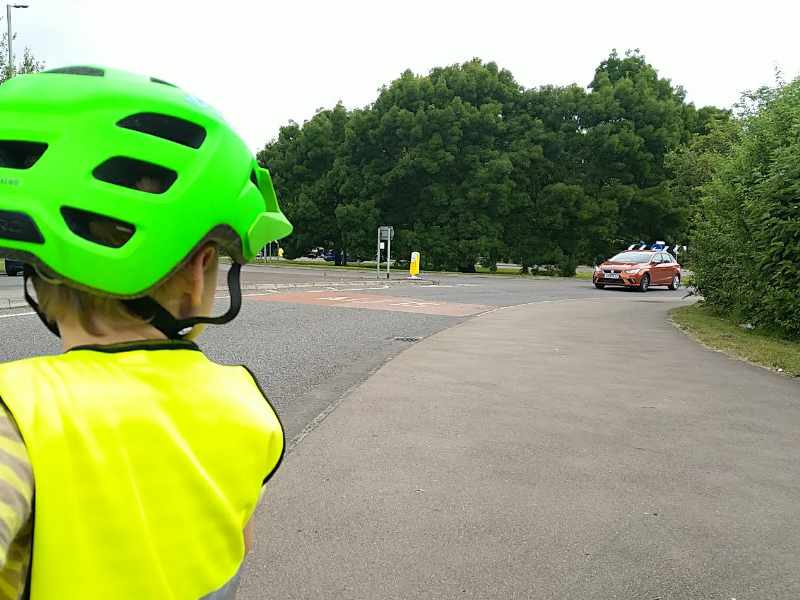
- The right turn cycle refuge is narrow, and only suitable for a single cycle. Given the intention for this to be accessible to all types of cycle facility, the carriageway width should be better aligned here to provide a more adequate facility.
- There is currently a stranded section of shared use path into the ASDA retail area. We would suggest that, whilst not suitable for all users, the southern footway be widened and converted into a shared use path to connect the B&Q section and the approach from the cycle spine directly to ASDA without requiring less confident users to negotiate the short on road section and roundabout to access the supermarket. There is at least 1m of spare carriageway available to achieve this assuming 3.2m lanes in each direction.
- The ‘ASDA’ roundabout geometry remains relatively open, allowing faster turning speeds. We recognise the need for HGV access at this location, but believe there is opportunity for a build out around the central island of cobbled, painted or other treatment to imply a narrower circulatory lane.
Drawing 2
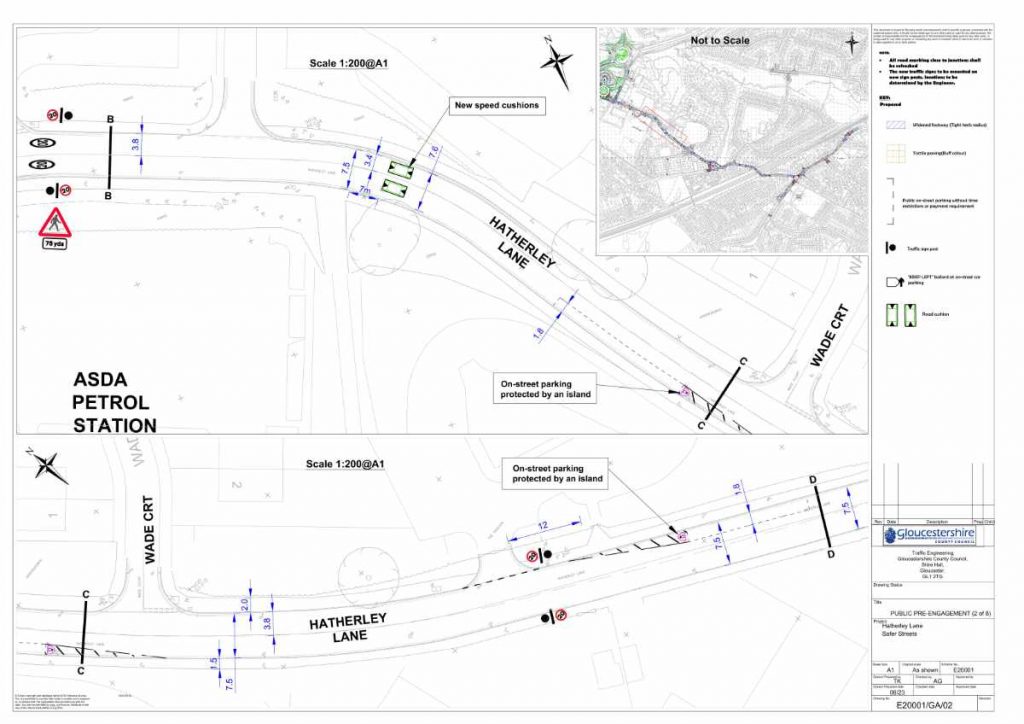
- There is excessive on street parking at these locations, which often creates scenarios for close passes of those cycling given the limited carriageway width. We recommend removal of the section on the southern side of the carriageway which presents a particular challenge.
Drawing 3
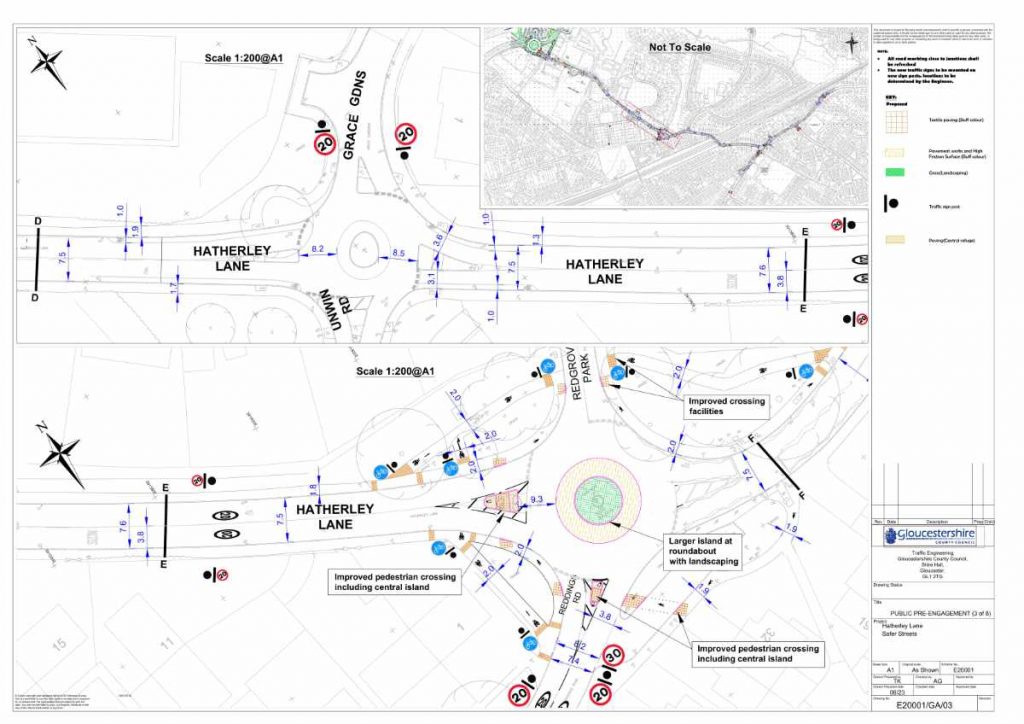
- The painted cycle lane approaches to the roundabout connecting Unwin Road, which are already in place, are grossly inadequate and against current safety guidance. Observation of this roundabout shows that the majority of vehicles overrun the painted section, and then cut across the cycling line through the roundabout. Their presence encourages cycle users to position themselves poorly through the junction, increasing risk, and driver hostility to those who take a safe line that is outside the marked cycle facility. We strongly recommend that the painted ‘sharrows’ here are removed at the entrance and exit arms, and centrally painted cycle markings are used before and on the roundabout.
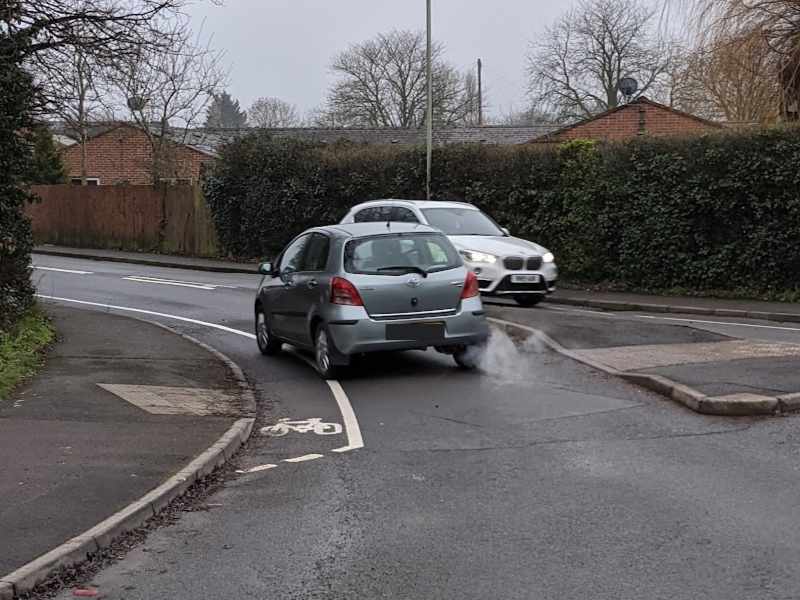
- The complexity of the markings and pavings at the Redgrove Park roundabout show the inadequacy of the cycle facilities at this location. The parallel facilities are interrupted, deviate from the desire line, and do not connect to any onward facility. A cyclist using them must slow at least twice, loses priority, and must look in a very difficult direction to identify if it is safe to proceed. We believe they are unlikely to be used regularly, and create more risk than they reduce. We recommend their removal, and clearer on carriageway markings, or the simplification of this roundabout to a crossing junction. This has an added benefit of simplifying the pedestrian creating space, removing the need for tactile crossings and creating additional space for planting.
- We support the larger island to narrow the circulatory width although advise that careful consideration is given to planting strategy to ensure visibility is protected.
Drawing 4
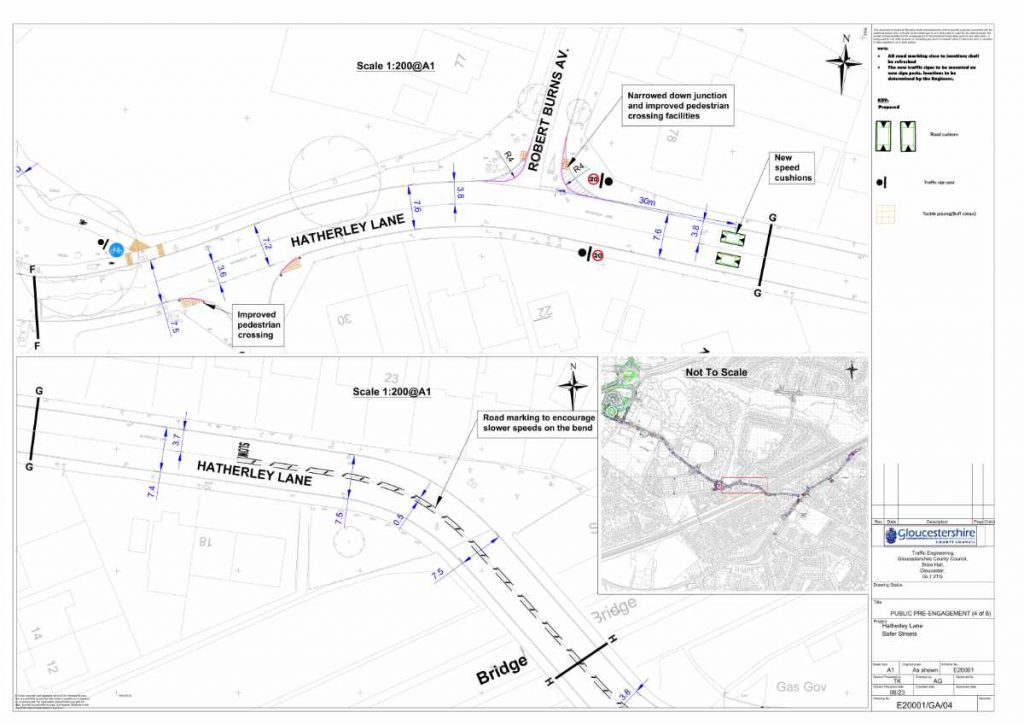
- We support the narrowing of Robert Burns Avenue corner to slow speeds through this area.
- The poor sighting lines on the approaches and crossing of the railway bridge make this one of the more uncomfortable sections of the area for cycle users. There is no good evidence that central hatchings will slow traffic, and it does nothing to eliminate the risk of close passes or oncoming vehicle encounters. We believe a more substantial approach is required here, for example by widening pavements to narrow the carriageway width and using no overtaking markings on through the approaches and bridge section, or using chicanes and pinch points with cycle bypasses on each side to slow traffic more significantly. Without this, we think the impact of the whole scheme on cycling will be limited as this will remain a key gap in comfort on the network.
Drawing 5
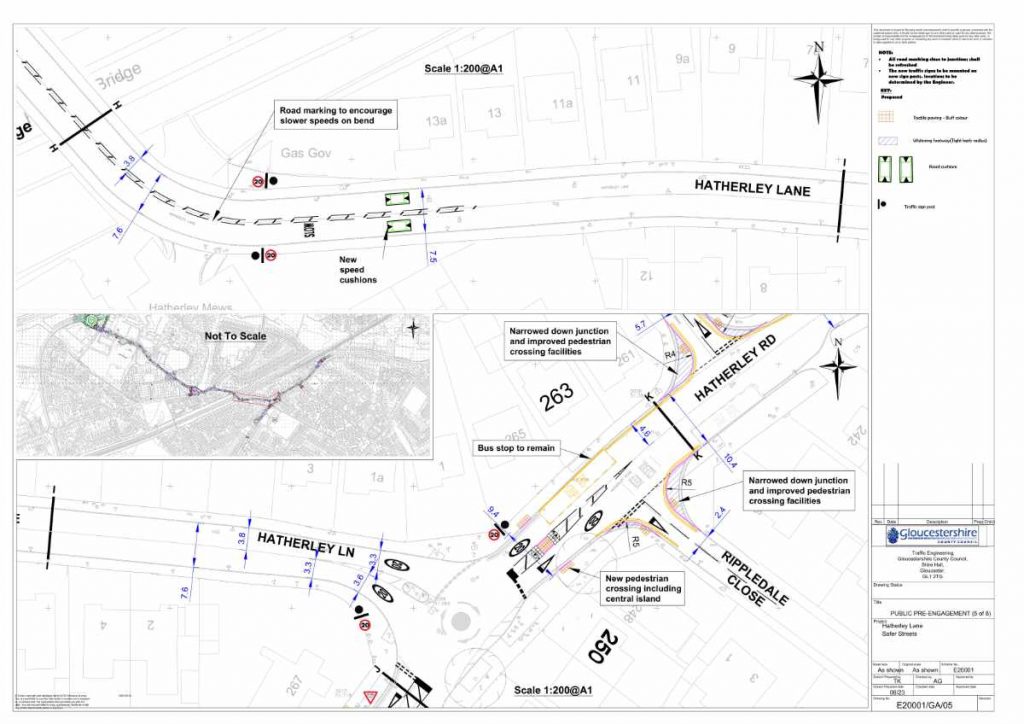
- Observation of the mini roundabout at Hatherley Lane/Hatherley Road shows that the wide expanse of tarmac here allows overrunning of the mini roundabout. Particularly for cyclists approaching from the north on Hatherley Road turning into Hatherley Lane, there are often attempts for vehicles to squeeze past them on the roundabout. We would therefore encourage either a smaller carriageway area (perhaps with raised overruns as required for bus movements), or a solid feature at the centre of the roundabout.
Drawing 6
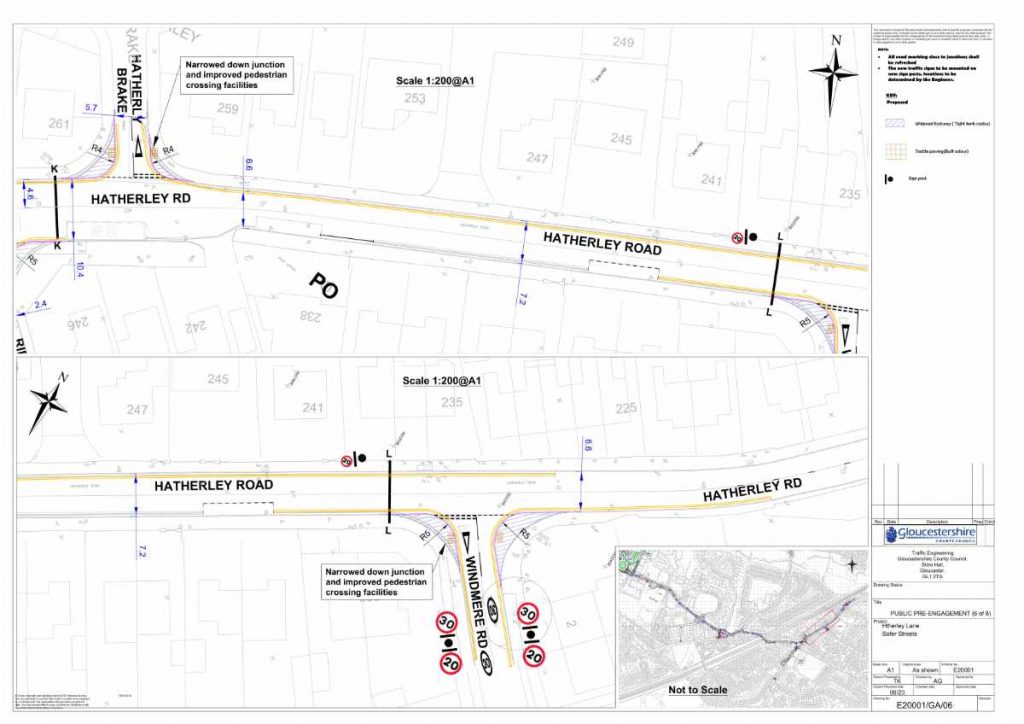
- We again welcome the narrowed junction throats along these sections, which are a highly effective means of slowing motor vehicle traffic. We do note that there is a missed opportunity to trial continuous pavements across low traffic side roads here for an even more enhanced pedestrian experience.
Drawing 7
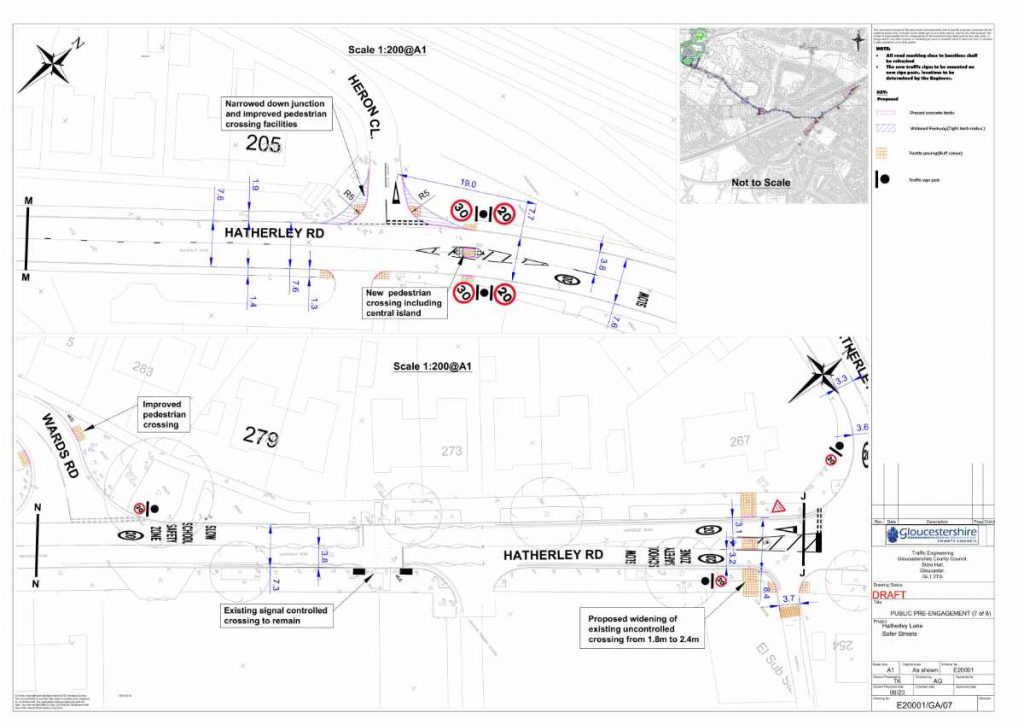
- (Top drawing) Whilst not currently related to cycling, we believe the 20mph limit should be extended beyond the exit point from the Cloddymore Bridge access point, both to enhance the environment for the substantial number of users at this point, and in anticipation of future connectivity that GWR/network rail building a fully accessible bridge with ramp might deliver at this location.
- (Bottom drawing) The plans show the access to the shared path after the roundabout is protected, but it still shows an exclusionary barrier in place that is not accessible for a range of adapted cycles. This location also has a contradictory ‘shared path’ and ‘cyclists dismount’ sign mounted to the same pole. The current arrangement does not meet current equality and disability standards, and we recommend that the barriers be replaced with a single central bollard, and a ‘cyclists slow’ or similar sign used.
Drawing 8
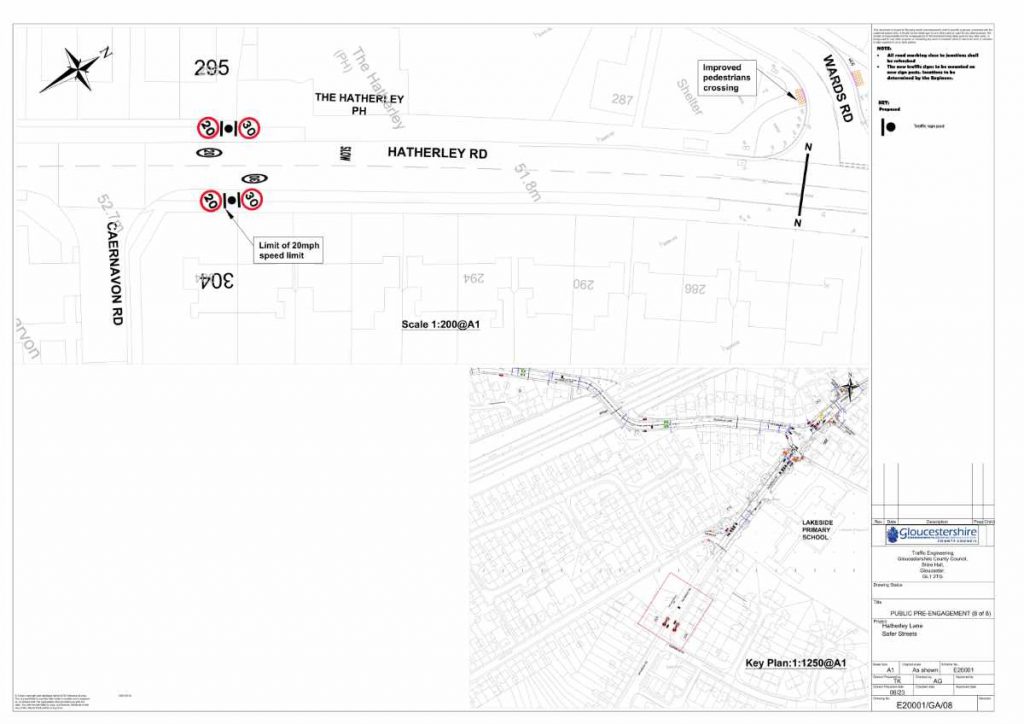
- No comments
We have also offered the highway team a chance to ride the route with us to experience the issues raised, and have shared our feedback with local councillor (and supporter of 20mph speed limits), Cllr Roger Whyborn (LD).
